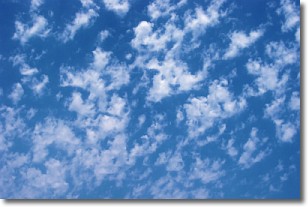Weather Alerts for Colorado
1. Flood Advisory for: Denver, CO
2. Flood Advisory for: Douglas, CO
3. Red Flag Warning for: Baca County Including Springfield and Eastern Comanche Grasslands
4. Winter Storm Warning for: Larimer and Boulder Counties Between 6000 and 9000 Feet; Jefferson and West Douglas Counties Above 6000 Feet/Gilpin/Clear Creek/Northeast Park Counties Below 9000 Feet
5. Winter Storm Warning for: South and East Jackson/Larimer/North and Northeast Grand/Northwest Boulder Counties Above 9000 Feet; South and Southeast Grand/West Central and Southwest Boulder/Gilpin/Clear Creek/Summit/North and West Park Counties Above 9000 Feet
6. Winter Storm Warning for: Teller County/Rampart Range above 7500fT/Pike's Peak Between 7500 And 11000 Ft
7. Winter Storm Warning for: Western Mosquito Range/East Lake County Above 11000 Ft; Eastern Sawatch Mountains above 11000 Ft; Pikes Peak above 11000 Ft
8. Winter Weather Advisory for: Central and Southeast Park County
9. Winter Weather Advisory for: Elbert/Central and East Douglas Counties Above 6000 Feet
10. Winter Weather Advisory for: Elkhead and Park Mountains; Flat Tops
11. Winter Weather Advisory for: Grand and Battlement Mesas; Gore and Elk Mountains/Central Mountain Valleys; West Elk and Sawatch Mountains
12. Winter Weather Advisory for: La Garita Mountains Above 10000 Ft; Eastern San Juan Mountains Above 10000 Ft; Northern Sangre de Cristo Mountains above 11000 Ft
13. Winter Weather Advisory for: Leadville Vicinity/Lake County Below 11000 Ft; Western Chaffee County Between 9000 and 11000 Ft; Western Mosquito Range/East Chaffee County above 9000Ft; Northwestern Fremont County Above 8500Ft
14. Winter Weather Advisory for: Northern El Paso County/Monument Ridge/Rampart Range Below 7500 Ft
15. Winter Weather Advisory for: Northwestern San Juan Mountains; Southwest San Juan Mountains
Want more detail? Get the Complete 7 Day and Night Detailed Forecast!
Current U.S. National Radar--Current
The Current National Weather Radar is shown below with a UTC Time (subtract 5 hours from UTC to get Eastern Time).

National Weather Forecast--Current
The Current National Weather Forecast and National Weather Map are shown below.

National Weather Forecast for Tomorrow
Tomorrow National Weather Forecast and Tomorrow National Weather Map are show below.

North America Water Vapor (Moisture)
This map shows recent moisture content over North America. Bright and colored areas show high moisture (ie, clouds); brown indicates very little moisture present; black indicates no moisture.

Weather Topic: What is Evaporation?
Home - Education - Precipitation - Evaporation
 Next Topic: Fog
Next Topic: Fog
Evaporation is the process which returns water from the earth
back to the atmosphere, and is another crucial process in the water cycle.
Evaporation is the transformation of liquid into gas, and it happens because
molecules are excited by the application of energy and turn into vapor.
In order for water to evaporate it has to be on the surface of a body of water.
Next Topic: Fog
Weather Topic: What are Fractus Clouds?
Home - Education - Cloud Types - Fractus Clouds
 Next Topic: Freezing Rain
Next Topic: Freezing Rain
A fractus cloud (scud) is a fragmented, tattered cloud which has
likely been sheared off of another cloud. They are accessory clouds, meaning they
develop from parent clouds, and are named in a way which describes the original
cloud which contained them.
Fractus clouds which have originated from cumulus clouds are referred to as
cumulus fractus, while fractus clouds which have originated from stratus clouds
are referred to as stratus fractus. Under certain conditions a fractus cloud might
merge with another cloud, or develop into a cumulus cloud, but usually a
fractus cloud seen by itself will dissipate rapidly.
They are often observed on the leading and trailing edges of storm clouds,
and are a display of wind activity.
Next Topic: Freezing Rain




